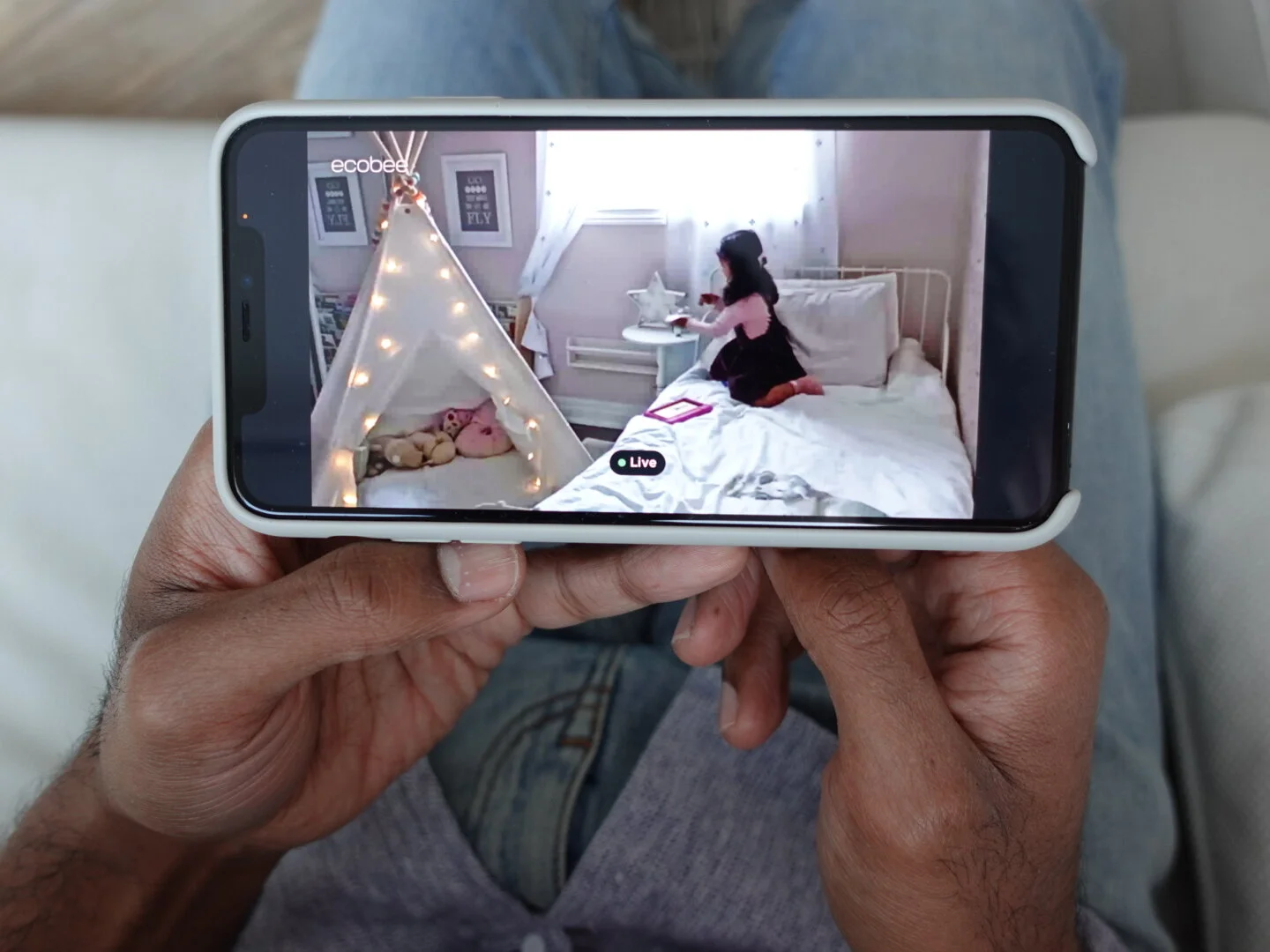
ecobee - Toronto, ON
Making an ecobee Baby Monitor
Scroll ↓
Overview
Project role
Research lead
Methods
Interviews, virtual home visits, validation survey, field testing.
Industry
Consumer electronics, Smart Home, IoT
Impact
Shaped the design research for the MVP for a new feature and helped prioritized the post launch roadmap
Increased sales (3 weeks after launch, 22% of all new cameras were using the feature ⚡️)
Received coverage from top tech and parental product review sites, including The Verge, Today’s Parent, and CG magazine.
Framing the Problem
Business Challenge
The launch of ecobee’s suite of home monitoring products coincided with the onset of COVID-19, when people were suddenly spending more time at home and not needing security solutions.
Customer Challenge
Shortly after launch, I discovered that parents were using the SmartCamera to monitor their children, instead of for its intended purpose. While demand for security solutions was low, our customers were looking for ways to monitor their kids while everyone was home bound. I started to explore how we might serve parents more intentionally by creating software features that supported child and baby monitoring
Confirming the Market Opportunity
Competitive & Market Gaps Analysis
Before we started UX research, we needed to understand if there was even a market for the kind of product we were pitching. In collaboration with marketing, we learned that 7% of Amazon reviews for Nest Indoor Cameras indicated that they were purchased with the intent of using the camera as a baby monitor.
In-market smart baby monitors such as Arlo, Nanit, and Miku are single-purpose monitors. Using this insight, along with other market data to understand the market size, we confirmed that there was a gap in the existing smart baby monitoring market that we were positioned to fill with our existing hardware.
Competitive Analysis
Fieldwork
Once we confirmed there was an audience for the product (outside of our own base), we began qualitative research to understand the problem space..
We chose to do interviews and virtual site visits* so we could immerse ourselves in parent’s journey to find the perfect baby monitor. We talked to 3 different types of parents
Parents with new borns
Parents with toddlers
Parents monitoring older children
We also segmented our participants based on the type of baby monitor they had (radio frequency, audio/video, wifi-enabled/non-wifi enabled) because we needed to understand how we could combine strengths of existing solutions while avoiding the pitfalls.
*Because this project took place over the course of the pandemic, we conducted virtual site visits, rather than physically visiting our participants homes. We also had our participants submit photos of their nurseries, so we could understand context of use and placement challenges.
Interviews & Virtual Home Visits
Synthesis
Analysis
To start to make sense of all the qualitative data we collected, we created a codebooks, using our research questions as the back bone.
Insights
One of the primary goals of of the project was to come up with primary and secondary jobs-to-be-done so that we could develop a lean feature set for our MVP, while keeping in mind the fast-follow features. Below are the examples of the secondary jobs-to-be-done. Each of these secondary jobs laddered up to the primary job, which was ensuring the baby/child’s safety at all times.
Parents need to see and hear for themselves
Parents didn’t always trust technology to alert them if something was wrong. They felt they knew their baby best, and were better able to detect subtleties in their sounds and actions.
They needed to passively monitor baby
But they also didn’t want to be glued to their monitors. This contradiction led us to ask: How might we give parents the ability see and hear for themselves while they passively monitor their child?
Parents need reliable, fast crib connection
Existing monitors increased parental anxiety with slow load times and sub-par audio and video quality.
Validation
While designers began UI concept development, we tested our feature prioritization framework with a larger audience, with the goal of testing hypotheses generated from qualitative data.
Impact
The goal was to create an MVP to measure press, feature adoption, and customer interest via sales and campaign engagement. Our success metric to invest in further features was for at least 10% of all new cameras sold to activate the feature. Within 2 weeks, we achieved twice our original expectation, and began talking to customers about how to further develop the feature.
Sales
Our insights also informed the marketing campaign. We chose platforms that would help us establish trust with customers, as that was one of the primary pull factors we identified in our qualitative research.
We also highlighted elements of the ecobee SmartCamera that addressed pain points of in-market monitors — that they are poor quality and single-purpose devices and end up in a “junk drawer” or in the garage after they’re not being used as a baby monitor anymore. The SmartCamera, on the other hand, is a premium-quality device that can be re-purposed once your baby no longer needs monitoring.
Ultimately, the campaign generated 20x the traffic of campaigns for the camera as a security device.
Marketing
The research resulted in feature prioritization framework that allowed us to market-test Baby Monitor Mode and continue to invest in development after its launch.
Feature Prioritization
Team
Research
Michelle Johnstone, Amanda Bamford
UX Design
Jenn Stack
Product Management
Matas Sriubiskis
Creative
Lisa Stuve, Kaitlin Bernard, Claudia Kloc, Michael Withers
Development
Stephen Mitchell











